SUSTAINABILITY
The VAP understands sustainability as the three aspects of ecological production, social working conditions and a sustainable economy. Only if sustainable solutions are found is the future secure.
Sustainable production
One third of emissions are due to transport. We have set ourselves high goals to reduce these emissions. Rail transport is already a very environmentally friendly means of transport.
Sustainable working conditions
The safety and health of shunting workers is strained by the cumbersome procedures and heavy physical work. In the foreseeable future, there will be a shortage of workers in this sector due to the unattractive nature of the work. We can change this and take on social responsibility.
- With the Digital Automatic Coupling (DAC), the risk to health and safety is significantly reduced.
Sustainable economy
Only a system that makes a profit can survive in the long term. In order to remain competitive, the rail freight sector must make its processes more efficient, increase its productivity and make better use of its capacities. This is important, among other things, in order to be better able to absorb the forecast growth of 30% more freight traffic volume by 2050.
- With the automation and digitalisation of rail freight transport, there is a sustainable push that increases the marketability of the railway and also reduces production costs.

«Modal shift requires determination from the top management team»
The Coop Group has committed itself to reducing CO2 emissions. Shifting transport to rail is a central component of this strategy. In an interview with VAP, Daniel Hintermann, Head of Logistics at the Coop Group, explains how the retail and wholesale group is achieving this and the challenges it faces.
VAP: Mr Hintermann, how did the Coop Group manage to shift two thirds of the transport between its distribution centres to rail?
Daniel Hintermann: It was a process that took several years. It was initiated in 2010 with the decision to buy a freight railway. At that time, we took over Railcare AG as a wholly owned subsidiary. We gradually integrated the small rail transport company into Coop’s logistics world. Today, Railcare is an integral part of our Group-wide transport chain. It enables us to further increase the proportion of rail transport.
How did the Coop Group come to have its own rail transport company?
In 2008, Coop developed its vision for CO2 neutrality and the centralisation strategy for logistics and production. We were looking for new approaches to transport logistics in order to achieve the goals we had set ourselves. We found what we were looking for with the Railcare concept at the time.
What proportion of rail transport are you aiming for?
We can imagine increasing the share of rail transport in Swiss delivery traffic – i.e. the outbound business – from 40% today to 50%. We see similar potential for inbound traffic from Europe and Switzerland. To achieve these goals, we are facing a challenging relocation process lasting several years.
What advice would you give to other companies that want to shift transport from road to rail?
In my opinion, the top management team needs to be determined to actively shift transport. This requires a high degree of standardisation in the equipment and close process networking between the shipper and the railway.
How does the Coop Group co-operate with the VAP?
Coop has been a member of the VAP for many years. We have repeatedly been able to count on the professional support of the VAP, particularly for contracts, project support or technical recommendations on the subject of sidings.
What strengths do you attribute to the VAP?
The VAP is particularly strong when it comes to knowledge about sensible contracts and applicable regulations. We appreciate the fact that the people in charge are available at any time and in an uncomplicated manner, take a pragmatic approach and offer practical and realisable solutions.
How would you describe the VAP?
As a central knowledge platform for all aspects of rail freight transport for the Coop Group as a shipper.
Who would you recommend working with the VAP?
All shippers who transport goods by rail or want to do so in the future.
Where do you see the most urgent need for action in rail freight transport?
Digitalisation across the entire transport chain. There is also an urgent need for automation on the last mile and in shunting traffic.
What would you like to see for the future of rail freight transport in Switzerland?
I would like to see rail freight transport become sustainably competitive. To achieve this, it must make sufficient train paths available to the rail freight companies. Finally, I would like to see more dynamism in process changes, for example when it comes to changing transport flows.
What has not yet been said?
We are seeing a trend towards over-regulation and technocracy in rail freight transport. This makes rail freight transport neither safer nor more competitive. The players involved should join forces to counteract this development.
Thank you, Mr Hintermann, for the informative interview.

Daniel Hintermann has been Head of Logistics and a member of the Coop Group’s Executive Board since 2017. His long career at Coop began in 2001 at Interdiscount, and in 2010 he became Head of Logistics Region Northwestern Switzerland. The licensed business economist gained his first professional experience in management consultancy.
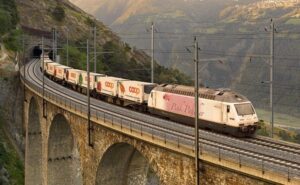
The Coop Group is the largest retail and wholesale company in Switzerland. It employs 94,790 people – including 3,417 apprentices – and operates 2,633 sales outlets/markets in Switzerland and Europe. One pillar is the retail trade with the Coop supermarkets and numerous specialised formats in Switzerland, the second is international wholesale and production.

Titus Büter from Swiss Post wants fast and punctual freight trains
Titus Bütler is Head of Transport at Post CH AG and has been responsible for all letter, parcel and newspaper transport by rail and road in Switzerland since the beginning of 2022. Previously, he managed the Frauenfeld parcel center for over 20 years, where up to half a million parcels are processed daily. He also designed the network expansion with the new parcel centers in Cadenazzo, Vétroz, Untervaz and Ostermundigen. In an interview with VAP, he explains the importance of rail transport for Swiss Post.
Here’s what it’s all about:
- How high is the share of rail in the modal split at Swiss Post?
- Customer demand for fast delivery is increasing
- “Pain points”, or optimization potential in rail freight transport
- Swiss Post is the European leader in the transport of goods by rail
VAP: Mr. Bütler, Swiss Post’s yellow trains are striking. More and more, yellow trucks can also be seen on the roads. Is this impression deceptive?
Titus Bütler: Our trucks with the yellow containers do attract attention. Our customers are increasingly demanding fast delivery: picked up in the evening and delivered the next morning. So we’re not talking about 24-hour delivery, but about 15 to 20 hours – and that to any place in Switzerland, whether urban or rural. So we are under time pressure throughout the supply chain. This makes it difficult to bundle parcel volumes to fill entire trains. We choose to go by rail wherever it makes ecological and economic sense. Around 50 percent of all letters and parcels already make at least part of their journey by train. A short train with one or two wagons makes no sense – not even ecologically.
What is stopping Swiss Post from using rail for the transports we see on the road?
We are working with our transport partner SBB-Cargo to shift more parcel shipments back onto rail. We need fast and regular express routes. The average speed of some postal trains is below 50km/h, even though we have fast rolling stock and run light trains. That is too slow.
How do you see the future of postal logistics, will there be more by rail or by road?
We clearly want to bring more volume onto the railways, especially on the west-east axis.
Swiss Post’s newly planned centers do not have rail connections. Why?
In recent years, we have put several small parcel centers into operation. Terminals require land, make the project more expensive and delay realization. Planning and construction were carried out under time pressure: in some cases, less than 2 years passed between the decision on the location and the opening. Where possible, however, we use terminals in the vicinity, e.g. in the case of Cadenazzo, the SBB terminal. Parcels to and from southern Switzerland travel by rail.
Parcels and letters are not considered so-called “rail-affine” goods. What competencies do you have as Swiss Post, as a shipper, to ensure that these goods are nevertheless transported by rail?
We are the only postal service in Europe that transports such goods by rail on a large scale. The prerequisite is that the inclusion of rail is already taken into account in the design and – even more important – that there is an infrastructure that allows fast freight trains with high punctuality at all. We have experts in our team who are very familiar with rail freight transport.
Swiss Post has the same owner as SBB Cargo. Is this more of an opportunity/simplification for you? How would you describe this relationship?
The transports were put out to public tender. The ownership does not play a role. We have a clear customer-supplier relationship, just like other transport companies. Our requirements in terms of punctuality and reliability are very high and we are very satisfied with the services provided by SBB Cargo.
If the fairy godmother were to grant you one logistical wish, what would it be?
I would wish for regular and fast train paths on the west-east axis.
How would you describe the VAP?
We are one of the largest siding owners and one of the largest rail shippers in Switzerland. The VAP represents their legitimate interests at various levels and networks the players among themselves.
What strengths do you attribute to the VAP?
The VAP is indispensable for the political work of all players in rail freight transport.
To whom would you recommend cooperation with the VAP?
Every company that owns tracks or wagons or is active in rail freight transport – whether as a customer or as an RU – benefits from the VAP.
What has not been said yet:
Our mail trains are important to us. We use them to connect Switzerland quickly, reliably and ecologically. That is why it is important to us that the image of slow and often spray-painted freight trains does not rub off on our mail trains.
Mr. Bütler, thank you for the interview and the interesting insights.

Power shortage (Part 4): Emergency measures are concretised
Energy security is and remains one of our top issues. The Federal Council is currently concretising the management measures in the event of an electricity shortage in the form of prepared ordinances. Special provisions are envisaged for licensed public transport companies, including rail freight transport. The FOT is preparing a draft ordinance for public transport together with the working group of industry associations, while the VAP represents the interests of freight transport.
This is what it’s all about:
- Federal Council has plan of measures for security of electricity supply drawn up
- Gradual quota system to prevent critical grid shutdowns
- Next step: preparation of specific draft ordinances
- Traction current will become more expensive next year
At its meeting on 23 November 2022, the Federal Council discussed the management measures to be taken in the event of an electricity shortage. For the draft ordinances with graduated
measures until 12 December 2022. The system leader rail commented on behalf of the industry.
Avoiding the worst with each level of measures
With the measures adopted so far, the Federal Council is strengthening the security of electricity supply: maintaining hydropower reserves, providing thermal reserve power plants, increasing the transmission capacity of the electricity grids. In addition, it wants to prepare graduated measures to reduce electricity consumption. Calls for economical electricity consumption and the energy-saving alliance of the business community are intended to raise awareness among companies across the board.
Should a critical power supply bottleneck occur during the winter period, the Federal Council will regulate the power supply with temporary measures. In the event of a crisis, it would issue targeted consumption restrictions with the help of decrees. This is intended to ensure grid stability and thus the supply of electricity. The aim of each stage is to avoid even more drastic measures.
Quota system to prevent grid shutdowns
The Federal Council sees the quota system as a key measure to prevent critical grid shutdowns. In order to ensure its effectiveness, it does not want to exempt any electricity purchasers.
However, it envisages special provisions for licensed public transport companies. Public transport as a core service should be guaranteed for as long as possible. In order to ensure its functioning even in the event of power shortages, measures are to be implemented according to the «public transport management model».
Management measures for public transport
In a working group of VöV, SBB, BAV and VAP, we have worked out the graduated measures for passenger and freight transport in the last few months. In the case of a power quota, freight logistics should basically be maintained and scaled as quickly as possible according to the development of demand. The industry must prepare to react quickly. For it is impossible to predict today in which areas decreases or increases in demand will occur. Based on the “public transport management model”, our working group will develop a corresponding draft ordinance of graduated management measures for public transport. We at the VAP support the approach that has been developed, especially the special measures for public transport.
Traction current will become more expensive
The fact that traction current is not excluded from sudden turbulences is shown by the latest announcement of the SBB. Here, the energy division announces a serious deficit of CHF 180 million for 2022. According to SBB, as a result of the persistent drought in the summer, 90% of the railway’s electricity could not be generated from its own hydroelectric power plants as usual. SBB had to buy expensive electricity on the market at short notice.
After negotiations with the BAV, the SBB will raise the electricity price for 2023 by 3 centimes to 13.5 centimes per kilowatt hour. The BAV wants to pass on the higher electricity costs in the train path price to the various transport sectors on a differentiated basis. In long-distance traffic the full amount of 3 centimes will be passed on, in regional and freight traffic only a part with 1 centime. The fact that SBB’s application for full deficit coverage with a surcharge of 10 centimes was not approved by the FOT may be good news for the railway companies for the time being. But the uncertainty of further surcharges remains, and this will also have an influence on future offer calculations.
Transparency needed
We believe that the provision of electrical energy at a predictable cost rate is central to the future design of offers. The recent price turbulences already seem very adventurous; even more so when one looks back at the many years with a positive balance. We expect a transparent review of the recent events.

ELECTRICITY SHORTAGE (PART 3): SHARE SAVINGS APPEALS
The electricity shortage is an urgent political and economic issue. That is why we are keen to ensure that our members are kept up to date. In this third blog episode, we discuss how the railway industry can respond to the Federal Council’s calls for savings by taking voluntary energy-saving measures.
The Confederation has set out the tasks for dealing with a possible energy crisis. Depending on how the energy situation develops, it can take energy-saving measures. Four levels are possible. At present we are on level 1 “voluntary savings appeals”. The Federal Office of Transport performs the central coordination task in transport matters. The Federal Department of the Environment, Transport and Communications (DETEC) has launched the “Energy Saving Alliance” with a broad-based campaign. This alliance calls on organisations throughout Switzerland to support efforts for security of supply in winter and to voluntarily take energy-saving measures. The goal must be to implement measures that are as uniform as possible across the industry in Switzerland. This is best understood by the users of transport services.
VAP joins in
We at the VAP endorse the recommendation to join the “Energy Saving Alliance”. In doing so, we are passing on the wake-up call of the Association of Public Transport (VöV) to our members. At its board meeting on 9 September 2022, VöV published its recommendation paper for the railway industry. In this paper, VöV recommends that the railway industry actively prepare for possible scenarios of an energy shortage and quickly implement the first concrete measures.
To ensure that the energy-saving measures can be implemented in a coordinated manner by all players in the railway industry, the working group “Electricity shortage in public transport” is responsible for their coordination. We are actively involved in this. The working group works closely with the SBB and PostBus AG Switzerland as system leaders. The common goal is to avoid operational restrictions in both passenger and freight transport. Capacities are only to be reduced in the event of a corresponding decline in demand. We are preparing intensively for further escalation levels in various working groups. The public sector should perceive our industry as competent and cooperative.
Because energy is scarce
“Energy is scarce. Let’s not waste it.” Under this campaign title, DETEC has summarised saving tips for private individuals and companies. The railway industry should also save energy voluntarily. This appeal includes implementation measures for numerous buildings used by the railways. They do not restrict the range of rail freight services. Currently, the focus is on lowering the heating temperature and reducing hot water and lighting. In addition, every transport company is required to optimise the energy efficiency of its office and operational buildings. The package will be supplemented by targeted savings measures for employees (train drivers, office staff, workshop staff).

«You won’t go far without courage»
Dr Heiko Fischer presides over the International Union of Wagon Keepers UIP. The former VTG boss talks to the VAP about the future of European rail freight transport and the digital transformation of the rail sector. He would like to see more enthusiasm for the latter and explains why he considers the discontinuation of single wagonload traffic in Switzerland to be fatal.
Dr Fischer, where do you see the biggest challenges and where do you see the levers for the European rail market?
There are quite a few. The railway infrastructure is outdated or in many places a patchwork quilt that has grown historically. There are still borders between the subsystems. Every year that nothing is done, the problem grows, because the infrastructure continues to age unwaveringly. This is where I see the adjusting screw in the coordination of expansion plans, relief routes and corresponding construction measures throughout Central Europe. It is true that the trans-European networks pursue this integrative approach. But secondary lines and fine distribution networks must not be excluded when it comes to investment allocation, expansion and renewal planning, train control systems and regulation.
I see a further control variable in the complete digitalisation of the railway sector, starting with the networking of the infrastructure via the rolling stock to the operational business. There should be a standardised logic with corresponding interfaces. As a result, electrification can take place in a measured and targeted manner. Lightly loaded routes could also be served by hydrogen-powered hybrid locomotives.
«Rail freight relies on public funding for certain urgencies, such as basic digitisation, infrastructure development, electrification, implementation of digital automatic coupling DAC and other time-critical leap innovations.»
Available capital is also a cornerstone. The railway market does not only need sufficient private capital. For certain urgencies, it depends on public funds, for example for basic digitisation, infrastructure expansion, electrification, the implementation of the digital automatic coupler DAC and other time-critical leap innovations. Such investments are beyond the financial powers of the private sector and most state railways. After all, nobody wants to invest in technologies that will only bear fruit in the next decade, perhaps even with other players in the railway system. This brings me to another set screw: we also need an anchored economic understanding of the mechanisms of rail freight transport among governments, regulators and politicians. This requires a rethink on the part of all those involved in the system.
In what way?
The rail sector is not exactly known for thinking proactively and implementing new things quickly. Many see themselves as victims, be it of the past, of wrong decisions, of the road, of the weather or of anything else. In my opinion, that absolutely has to change. After all, we don’t haul goods trains around because we enjoy it, but because we want to generate added value for shippers and our communities. The players in rail freight transport need to put the customer back in the centre of their attention and to be aware of their future needs. For the upcoming change to actually happen, we need more of a start-up mentality, a “can do” attitude.
What innovations have you driven forward at VTG in recent years, and which of them were groundbreaking?
VTG Connect spontaneously comes to mind. This telematics technology collects relevant data on the entire fleet and many transports. It creates the basis for efficient digital fleet management, because it makes data usable for customers, freight railways and maintenance purposes. With this innovation, we have, so to speak, launched the entry into real-time data transmission in freight transport as envisaged by the DAC.
What importance do you attach to the DAC in the future?
The DAC is a catalyst for the digital transformation of the rail sector. With it, a new control logic and real-time data flows can be mapped. We are a long way from that today. The DAC does more than automate the coupling process. It networks train drivers, cargo, cargo carriers and energy, i.e. electricity. The potential of this combined with new digital technologies is immense. The DAC is not only an intelligent train and load control system, but also a facilitator for other digitalisation initiatives such as digital data, train control and booking platforms.
«There will certainly be several platforms, because as before, each company will collect information that it cannot or may not share. One or even more of these platforms will emerge as central hubs that manage the operational railway business.»
What role will these play in the future?
There will certainly be several platforms, because as before, each company will collect information that it cannot or may not share. One or even several of these platforms will emerge as central hubs that manage operational railway operations. As such, they will provide freight operators with reliable information that can be used to reduce the distances between trains, calculate time windows and put more tonnage on the track per unit of time. A pan-European electronic freight traffic control system must not come from a tech giant à la Google, but should develop from within the rail sector itself. In this way, we show innovative strength vis-à-vis other modes of transport.
Perhaps in the future there will even be a superordinate body like Eurocontrol for the central coordination of air traffic control. Such a cockpit could control European rail freight traffic, give the train drivers certain instructions, intervene if necessary and later allow autonomous trains to run. However, such quantum leaps are only possible if digital technologies with artificial intelligence are implemented and take effect. Only they bring dynamism and ensure the necessary speed, which is absolutely central to the success of the digital transformation.
How could rail freight transport in Europe be developed sustainably?
With something that brings the economic impact of freight transport down to a common denominator and to which all players commit. I can imagine that one day there will be a long-term master plan in the sense of a self-regulating yet binding declaration of intent. All participating state and non-state railways would have to co-sign it. This master plan could state that they are working together towards a modal shift. I would remind you of the General Contract of Use (GCU) of 2006, which regulates the interaction between wagon keepers and railway undertakings as wagon operators. The advantage of a supranational agreement without the character of law is that it can be supplemented or adapted quickly and easily. The accesses to the NRLA are the best example of what should not happen: The community of railway states, including Switzerland, has committed itself to expanding the north-south axis. When Switzerland opened the NRLA tunnel, other states had not even started planning. A master plan for European freight transport could make this intention more binding and make it clear that the Green Deal and modal shift goals are meant seriously. Today it is still a pipe dream. Most of the time, everyone agrees with the basic demands. But as soon as it comes to working out something concrete from a single source, opinions diverge.
What do you think of the Federal Council’s report on ‘Rail Freight Transport in the Area’? What would it mean if the Federal Council abolished it?
In my opinion, that would be the biggest mistake in transport policy for decades. Switzerland proves that wagonload traffic works. However, it is still too expensive. But if train formation and separation are automatic, the train line is digitally controlled and the market benefits from the many advantages of digital offers, then the costs will also go down – and the need for subsidies will decrease. The Federal Council should think about how to make the offers more attractive for freight rail customers. To call the whole thing off even before digitalisation bears fruit would be criminal. Transferring rail freight to trucks also costs money and not every freight can be containerised for block trains. In my opinion, the Swiss government should be more confident in this area. Those who lack courage have already lost.
We at the VAP are members of the UIP. How would you describe the VAP?
It is a valuable member association of our European wagon keeper family. I perceive it as innovative and opinionated. Because of its unique membership structure, it has a special weight with us. The VAP represents not only the five largest Swiss wagon keepers, but also the interests of shippers, sidings and representatives of multimodal logistics chains. This diversity generates impact and a wealth of ideas among us, and I consider it a valuable strength. With its member diversity, the VAP can focus its demands more holistically on the users and place them with greater authority. I support the VAP’s client-centred approach, which involves the end-user in the discussion and decision-making process. Europe can benefit from the Swiss experience with wagonload traffic or the performance-based heavy vehicle charge. It is often seen as a “minilab” that mirrors issues for us. Furthermore, the VAP shows us in an exemplary way how to convince the population or how to shape something positively as a community.
What can the VAP do better?
Better is always possible. My appeal is not only to the VAP, but to all associations and people involved in transport policy. We need committed people who are willing to formulate interests with a view to the future. There are enough of those who think in terms of quarterly balance sheets. But that is no way to win the future.
What do you wish for this future?
More interest, more confidence. More enthusiasm. Shippers should be eager to put even more tonnes on the rails. This is the only way we can achieve the ambitious modal shift and climate targets. The population should realise how important rail freight transport is – and that it costs money. After all, an unchecked flood of lorries is not an alternative. I hope that you from the VAP and we from the UIP will continue to stand up for this departure day after day.
Dr Fischer, thank you very much for the informative interview.
|
Dr. Heiko Fischer Dr. Heiko Fischer served VTG for a total of more than 25 years until 2021, including more than 17 years as Chairman of the Executive Board. Since 2015, he has been President of the umbrella organization International Union of Wagon Keepers UIP, based in Brussels, as he was from 2004 to 2007. This represents more than 250 freight wagon keepers and maintenance centres with more than 223,000 freight wagons, which cover 50% of the tonne-kilometres in European rail freight transport. Dr Heiko Fischer’s former employer VTG AG operates the largest private freight car fleet in Europe with around 88,500 rail freight cars. In addition to hiring out freight wagons and tank containers, VTG offers multimodal logistics services and integrated digital solutions. |
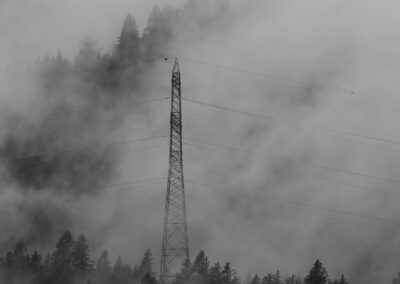
Power shortage (part 2): Prepare now for later
Should an electricity shortage actually occur in Switzerland due to the geopolitical crisis and supply bottlenecks, it is essential that freight transport customers can continue to be served. This means that the transport companies must clarify their energy needs in the event of a shortage and answer some key questions today.
The Swiss railways play a decisive role in coping with the high demand for both passenger and freight transport. They depend on a secure supply of electrical energy.
Ensuring supply via rail
If at some point the available traction current is no longer sufficient for all scheduled trains, journeys would have to be cancelled accordingly. The question is: which ones? We at the VAP are firmly committed to ensuring that our members can continue to serve all freight transport customers. The population and the economy depend on reliable transport chains. That is why freight trains must continue to run as long as possible even in a power shortage situation – as they did, by the way, in the thinned-out timetable during Covid-19.
Political leadership needed
The Swiss railway system is almost exclusively electrically powered. Most of the required traction current (16.7 Hz) comes from the country’s own hydroelectric power plants. Shifting transports from rail to road when there is a shortage of traction current is not very promising. In the event of a serious bottleneck, fossil fuels would also become scarcer. In order to maintain functioning transport chains, the companies involved in rail transport also need industrial electricity (50 Hz). Here, too, security of supply must be ensured. Security and reliability are required: The transport sector and the freight railways must be able to rely on the political leadership in the event of a crisis. Because even then, goods trains have to roll as long as there is demand. We want to strengthen this awareness among decision-makers.
Energy shortage not excluded
Let’s not fool ourselves: An unfavourable coincidence of really negative developments could manoeuvre Switzerland into a serious energy shortage situation as early as next winter. As representatives of the electricity and gas industries explained at the Economiesuisse webinar on 9 August 2022, energy supply is highly complex and dependent on many influences.
The Confederation assumes responsibility
The Confederation is aware of its responsibility. It takes measures to secure the energy supply and prepares for critical scenarios of an acute power shortage. Depending on the situation, these measures range from voluntary, industry-specific
industry-specific savings appeals to prescribed management measures (quota system).
Determine demand and savings potential
If you think about your own energy needs now, you will be prepared for an actual electricity shortage and less likely to be surprised. So it is time to assess your energy needs, reserves, alternatives and savings potential. This assessment helps to decide how, in the event of an electricity shortage, to reduce consumption in line with higher-level targets and still contribute to the supply of essential goods. Concrete questions in the company are, for example:
- Which activities require how much energy, what is their importance in production?
- What is the most effective energy-saving potential?
- How large are the reserves, how much energy can be dispensed with and for how long?
- Where can we switch to other energy sources and how quickly?
- Is communication in the production chains good? Are the contacts up to date?
- What restrictions do we implement to meet a quota?
Cooperation and communication
Companies should be open about these considerations. After all, it is not possible to predict which scenarios will actually occur at which point in time. The players in the sector can maintain the supply of important goods as well as possible if they cooperate across companies and communicate actively. That is why we at the VAP, as representatives of the shippers, are already actively involved in various committees and working groups.
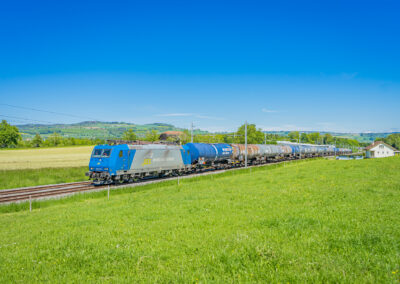
Economic advantages of a competitive freight railway
Freight transport plays a crucial role for the national economy as it enables the exchange of goods and services. In view of the challenges such as limited road capacity and climate change, the shift of freight transport to rail is becoming increasingly important. Here we explain the economic benefits of a modal shift.
Limited road capacity:
The road infrastructure is limited and is already reaching its limits in many regions. Due to the increased use of HGVs in freight transport, traffic on the roads continues to rise, leading to congestion, delays and increased transport costs. Shifting freight traffic to the railways relieves the roads. This enables more efficient use of existing infrastructure and reduces the need for expensive road extensions.
Climate change and environmental pollution:
The transport sector contributes significantly to CO2 emissions and other harmful environmental impacts. Compared to road transport, rail transport is more environmentally friendly, as trains produce on average fewer emissions per tonne-kilometre. In addition, rail transport reduces noise levels and minimises air pollution in urban areas, resulting in an improved quality of life for the population.
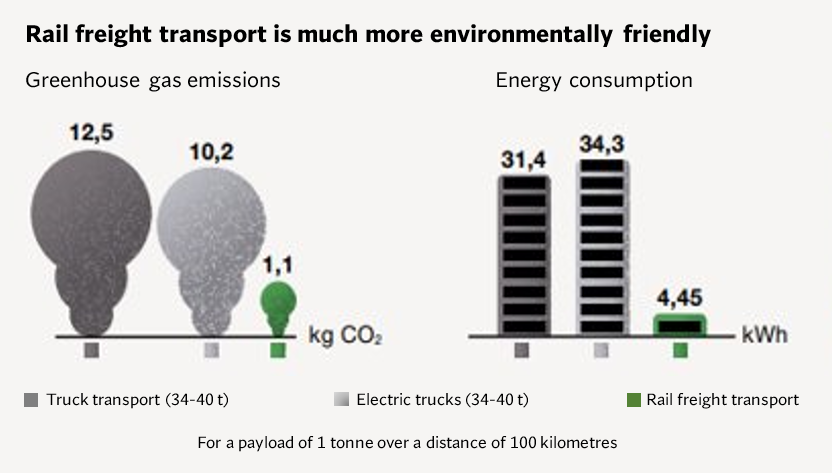
Efficiency and economy:
Rail offers high efficiency in freight transport as trains can carry larger loads than trucks. By using goods trains, large quantities of goods can be transported in one go, which leads to an optimisation of transport costs. This allows companies to improve their logistics processes and increase the efficiency of their supply chains. A more efficient freight transport connection leads to lower transport costs, which in turn increases the competitiveness of companies and has a positive impact on the national economy. Through digitalisation, the necessary freight wagons can be efficiently networked, thus avoiding fixed costs.
Safety and accident prevention:
Shifting freight transport to rail contributes to increasing road safety. Compared to road transport, accidents in rail transport are less frequent and generally have a lower impact on life, health and the environment. Reducing HGV traffic on the roads minimises potential sources of danger and increases safety for other road users.
Experienced logistics experts needed
Independent and sector-specific logistics experts are needed who specialise in specific products. The railways should concentrate on operating the trains, while the overall logistics are in the specialised hands of the logistics experts.
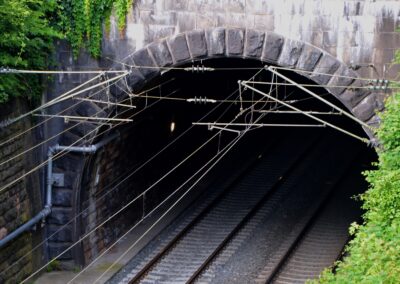
Electricity shortage: take precautions and develop scenarios
Energy transition, geopolitical crises, supply shortages – these and other factors could lead to an electricity shortage. The large consumers are called upon to develop scenarios for a quota system. We at the VAP are actively working on this.
Electricity is available – that was taken for granted in Switzerland for decades. This is now being called into question: on the one hand, the replacement of fossil fuels by sustainable energy sources will limit the available energy resources in the coming years. On the other hand, geopolitical conflicts and supply bottlenecks may have an additional negative impact on their availability, as the current situation shows us.
Active participation required
Against this background, the Confederation has called on all large consumers to cooperate in the preparations for a possible electricity shortage. If an electricity shortage does indeed occur, the rail sector will have to restrict passenger transport services. Freight transport is to be maintained in line with demand.
Freight transport plays a key role
The railways play a system-relevant role in freight transport with domestic, import and export traffic for the supply of the economy and society. If a massive power shortage occurs, the freight logistics capability should basically remain intact. However, it must adapt to the changed demand.
This is also the great unknown. At present it is not possible to draw up reliable scenarios for the development of demand in the event of an electricity shortage. Certainly, the demand for transport capacity will change noticeably both in Switzerland and in our neighbouring countries. But depending on the sector, it may fall as well as rise.
Viewing rail operations as a system
To ensure that rail freight traffic can continue to roll even in a crisis situation, the sector must react to the changed demand in a timely manner with an adapted transport offer. This is only possible if the entire rail operation is viewed as a system. In other words, all operationally relevant functions must remain functional.
Scenarios in progress
In order to curb energy consumption in the event of a crisis, passenger transport will be guided by the reduced timetables that it has already drawn up and implemented in the pandemic year 2020. In freight transport, possible scenarios are being developed in close dialogue with the logistics sector and with a view to the economic supply of the country. According to the mandate, coordinated scenarios should be available by the end of 2022. We at the VAP are actively contributing our knowledge and experience to this process.
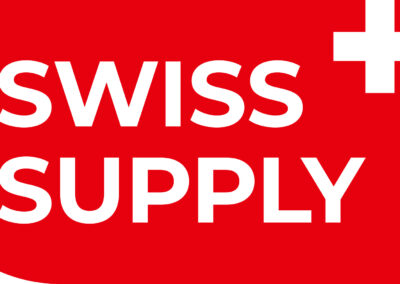
VAP becomes a member of SWISS SUPPLY
VAP as new competence partner
With the SWISS SUPPLY association, the most important logistics, supply and transport organisations in Switzerland want to promote the image of logistics, supply chain and transport and carry out public education work. The VAP, as the representative of the shipper industry in rail freight transport, joined the support organisation in August 2021 to contribute to these objectives. In this way, we create the best conditions for our members for an economically fruitful environment and a broad public understanding for a well-functioning supply. In future, we will coordinate our transport policy activities in Cargo Forum Switzerland with the initiatives of Swiss Supply in order to develop even more clout together.
How it came about
The idea for SWISS SUPPLY came about at the beginning of 2020 as part of the new focus exhibition “Experience Logistics!” at the Swiss Museum of Transport. The intention was to realise such image projects and corresponding initiatives in the future under the umbrella of a national non-profit organisation and with combined forces in a sustainable manner. Thus, the Swiss Association for Vocational Training in Logistics (ASFL SVBL), the Swiss Commercial Vehicle Association ASTAG, the value creation network GS1 Switzerland, the professional association for purchasing and supply management procure.ch, the association of Swiss forwarding and logistics companies SPEDLOGSWISS, the logistics network VNL Switzerland and the Swiss Logistics Foundation founded the new association SWISS SUPPLY on 26 March 2021. The organisation will be chaired by Jörg Mathis, CEO of GS1 Switzerland. The members of the organisation also form the sponsoring body and represent well over 10,000 members.
Strengthening supply, logistics and transport in Switzerland
Many people do not know: The national supply with the areas of procurement, logistics, storage, transport, forwarding, packaging, disposal and recycling form a system-relevant backbone of the Swiss economy. The initiators of SWISS SUPPLY want to improve the reputation of these sectors in Switzerland in the long term and arouse interest and understanding for them among the public. To this end, existing initiatives are being intensified and new activities launched. In addition, the association wants to generate enthusiasm for the industry among young people at an early stage. SWISS SUPPLY shows students and career changers comprehensive career opportunities with development possibilities in various directions.